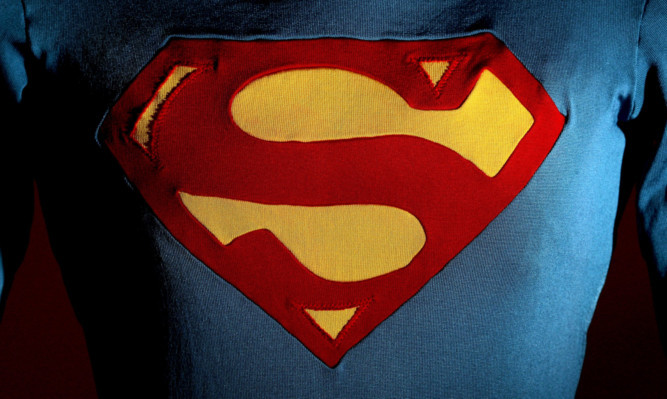
Henry Cavill had no shortage of research material to work from when he was cast as the new Superman.
The Man of Steel has been saving the world from evil for 75 years now in countless comics, cartoons, newspaper strips, books, radio and TV serials and films.
He’s even starred in his very own musical and has had academics analysing his role as a true American icon.
But Cavill decided to go straight to the source material for his interpretation of the character hailed as the first and best superhero.
“Where the character truly comes from is not from the movies or the TV shows, it’s from the comic books,” says the 30-year-old.
“So I had stacks of them and just read and read and read and read.
“Everyone has at some point pretended to be Superman, and I got the opportunity to portray this tremendous icon.
“Mind you, the number of back squats, and the amount of time I spent hobbling around the set because the trainers had beasted me with leg work was just awful.
“I may be a crippled Superman but at least I’ll have great-looking legs!”
Three-quarters of a century’s a long time to be fighting for truth, justice and the American way but Soupy’s popularity shows no signs of waning.
Indeed, Cavill’s forthcoming Superman “reboot”, Man Of Steel, shows every sign of being this summer’s hottest ticket at the box office, despite a major change that has upset some traditionalists.
Superman’s signature look set the template for most subsequent comic-book heroes, all rippling muscles under a skintight suit.
His red cape and blue suit with the red-and-yellow “S” shield on the chest had been tinkered with but never fundamentally altered until now.
Cavill, you see, seems to be going “commando”, as although the bulging biceps are all present and correct, Superman’s trademark red pants are missing!
That wouldn’t have gone down well in the 1940s, when much of what we recognise today about Supe was set in stone.
In fact, one theory says that the differences in the character over the decades reflects the threats faced by America at the time.
In the 1930s, when it was all gangsters and Tommy guns, he fought criminals and hoodlums but then came the Second World War.
All of a sudden, Superman’s wrapped in the flag, selling war bonds.
But while he was a major propaganda weapon with comic covers routinely featuring patriotic scenes showing him fighting the Germans and Japanese, the action rarely continued inside.
It was felt the stories should be a tonic for a war-weary nation, and a bit of escapism for troops on the front line.
No wonder in 1942 the Navy insisted that Superman comic books be included on the list of essential supplies for the Marine garrison on Midway Island.
In the 50s, though, he was all about dealing with new technological threats such as the neutron bomb but when the Cold War ended and terrorists like Bin Laden became the biggest concern, he was back fighting more personal foes such as Lex Luthor.
But for all that Superman blazed the trail, he’s been kind of missing in action of late.
The 1978 movie starring Christopher Reeve set the superhero movie ball rolling but since his last outing in 1987, several others have stolen his crown.
We’ve had more Batmen than you could shake a stick at, not to mention two different versions of Spider-Man and the Hulk.
Add in the X-Men and Iron Man making comics cool again and it’s fair to say Supe’s taken his heat-vision off the ball a bit.
We did have the Superman Returns movie in 2006 but the reaction from fans and critics alike was lukewarm.
We’ll have to see what the new movie brings but until now it’s fair to say Superman’s been poorly served by the big screen.
That might sound strange considering he’s been in cinemas since 1941, when a series of animated shorts appeared just three years after his comic debut.
That was followed by a pair of live-action serials in which Kirk Alyn became the first actor to portray the Man of Steel on screen.
The first feature film duly appeared in 1951, the brilliantly-named Superman And The Mole Men starring George Reeves.
And Reeves took Soupy to the small screen, too, Adventures Of Superman, running for more than 100 episodes until the star’s tragic and mysterious death in 1958.
But for such a popular character, it seems odd that we then had to wait another 20 years for a second movie, and a further decade after that for another TV series.
It was worth waiting for as Lois & Clark: The New Adventures of Superman was a huge hit and made a star of Teri Hatcher.
Even better and most recently, the Emmy-winning Smallville did what many cinema superhero blockbusters have done and told us about our hero’s teenage years.
Now, he’s in his eighth decade but there are no signs of this son of Krypton slowing down.

Enjoy the convenience of having The Sunday Post delivered as a digital ePaper straight to your smartphone, tablet or computer.
Subscribe for only £5.49 a month and enjoy all the benefits of the printed paper as a digital replica.
Subscribe